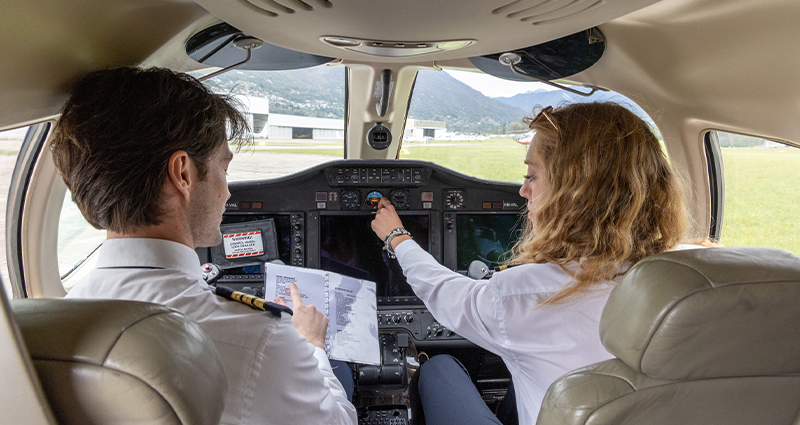Safety in Numbers: Trends in Aviation Accidents and Incidents

Every accident is preventable; the problem is that we don’t know how to prevent it until after the accident happens. However, what we can do as an industry is honor the anguish of each event by sharing the information, the mistakes and the outcomes to improve safety for everyone.
Over the last 20 years, the entire air transport industry (commercial and business aviation) has improved data gathering through coordinated efforts to enhance global safety. Gathering and categorizing aviation statistics worldwide provides insight into pilot behavior and the relationship and understanding of the systems and aircraft they fly. This information can be used to bolster training and refocus on weak areas—within the aircraft system, the pilots’ ability to interact with their aircraft or both.
Eye-Opening Numbers on Incidents Worldwide
If we begin by looking at the largest overview, there were 5,182 “occurrences” to aircraft and 1,274 associated fatalities around the world in 2023, according to the Aviation Safety Network database. It’s a breathtaking number since we tend to be country geocentric and don’t hear about incidents in the rest of the world. However, using this data can help us track universal pilot behavior and understand the trends of accidents.
It is noteworthy that 1.35 million people are killed or disabled in automobile accidents each year. That’s 3,700 people per day. So, when analyzing aviation statistics, it’s important to keep perspective and understand that, given the miles covered and number of passengers flown, aviation is exponentially safer.
Defining and Categorizing “Occurrences”
From minor incidents to substantial damage, each time an aircraft is operated outside the safety envelope, it becomes a reportable “occurrence” (however, many incidents will never be reported). Categorizing events is also a lesson in grammar.
It begins by understanding that an accident is an event that has unintentionally happened and resulted in damage to the aircraft, injuries or both. An incident is an event that has also unintentionally happened and had the potential to cause damage or harm to life. Any accident or incident is defined as an occurrence, but each occurrence is also assigned a category that has a unique name and identifier so the International Civil Aviation Organization (ICAO) can code and track threats to aviation safety worldwide.
Anything from a simple “Ground Handling (ramp)” hangar rash incident to an “Abnormal Runway Contact” is put into one of approximately 35 categories. Within each category, there are variables.
For example, TCAS Alert/Loss of Separation is parsed into near midair to midair collisions. It’s still one category, but the severity is also tracked. The occurrence category design permits multiple categories so that you could have an engine failure but also a loss of control. Multiple coding supports the primary focus of accident coding, but it sometimes skews root causes.
The leading type of occurrences is Loss of Control Inflight (LOC-I), followed by Controlled Flight into Terrain (CFIT), which is primarily attributed to human error (rather than mechanical problems or weather). The conundrum is that in a system error like MCAS, for example, the accident is put into the LOC-I category. However, is the root cause lack of training, lack of system disclosure, a mechanical failure, pilot error or all the above equally?
Taking Note of Turbulence
One of the fastest-growing categories of incidents and preventable accidents is turbulence. It’s one of the most significant causes of weather-related aviation incidents, and it’s on an upward trend. Paul Williams, a professor of atmospheric science, told Business Insider that, “…since 1979—when satellites first started observing the atmosphere—clear-air turbulence has jumped 15%.”
The article also states, “It’s a problem that isn’t going away. In 2017, Williams used climate model simulations to predict future turbulence. He found that clear-air turbulence in the Northern Hemisphere could triple in the next three to six decades. And as emissions increase, so will overall turbulence. It’s a vicious cycle that’s ushering in a new reality for air travel, which has already been plagued by problems since the pandemic hit.”
The good news is that technology is improving our ability to detect turbulent areas and wind shear, but that doesn’t mean it’s entirely avoidable. There will always be turbulence. The challenge is taking the numbers and educating the public that the seat belt sign can be a matter of life and death. If you’re not in your seat or your luggage isn’t secured, anything can become a projectile, which can also harm someone who is properly seated.
Data-Sharing Is Essential
No one likes sharing their mistakes with the world. All pilots fear the punitive fallout for admitting an error that could have caused harm. And for professional pilots, acknowledging mistakes could also mean the loss of employment.
However, there are several aviation communities and foundations that gather this information and keep it anonymous. We can all do our part by sharing information. Even if it seems like an isolated event, reporting it might reveal that it’s not and that it could be a bigger threat. Speak up.
Here are links for more information:
Aviation Safety Network
Aviation Safety Reporting System ASRS
FAA Hotline
Whistleblower Info System (not accident reporting, but if you see unsafe activities)
References:
- Aviation Occurrence Categories Definitions and Usage Notes – October 2011
- Aviation Occurrence Categories Definitions and Usage Notes – October 2013
- Fatalities by CICTT Aviation Occurrence Categories
- Aviation and Plane Crash Statistics
- Be warned: Flights are getting bumpier

Advanced Aircrew Academy has 120+ eLearning modules for everyone in your flight department. They can all be customized to your operating specifications (Ops Specs) to ease the pain of eLearning training and reduce the barriers to learning during recurrent training with Eye of the Pilot scenario-based training for Part 135.
https://www.aircrewacademy.com/
© 2024 Advanced Aircrew Academy. All Rights Reserved.
Next ArticleRelated Posts

Cognitive Overload in Aviation Training: Understanding and Mitigating Risks
If we look through a microscope at the elements of “safety”, we see things that are often hidden. We secretly know that the rules don’t matter as much as the attitude of the company and the person using them. The reality is that the rules are simply a benchmark to form a circle of safety parameters around an organization to establish the minimum level of safety.

Peer Support Programs: Transforming How Aviation Addresses Mental Health
While the industry has evolved in acknowledging these issues, stigma still impedes many from seeking available resources. Here, the significance of Peer Support Programs (PSPs) has been increasingly recognized. These initiatives offer a confidential haven where concerns can be openly discussed, free from judgment.
